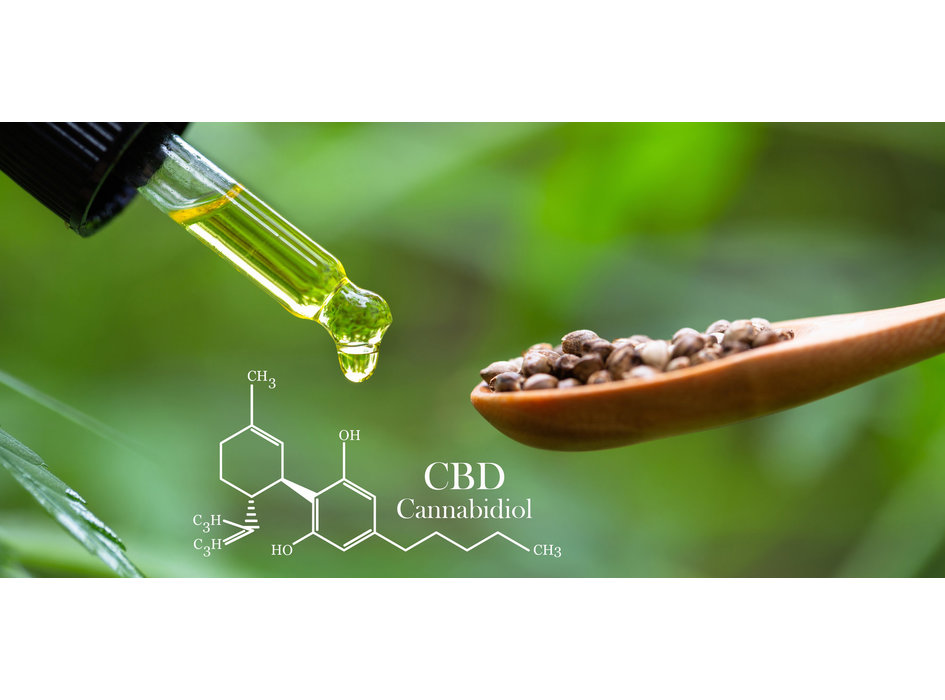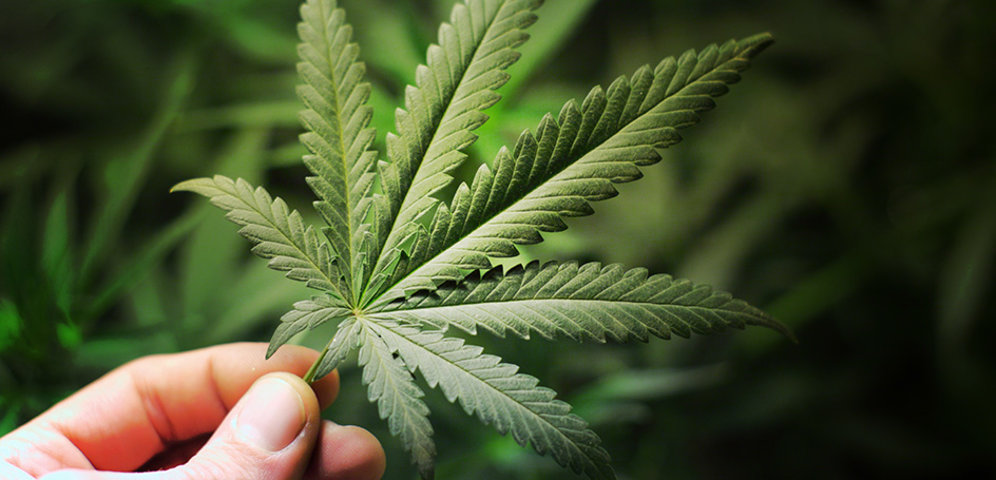Obsah
Hemp was a common part of households in the past, in the Slovak ones it was no different. From hemp people were able to create various clothes, whether home or social textiles. Each of you will certainly find a hemp tarpaulin in the home of your grandparents or grandparents, which was really very difficult to damage or wash due to their strength and durability. From the seed, people are used to preparing tasty mash. Its origins date back to the ancient 4th millennium BC, when it was grown mainly in Asia, from where it was later spread to Europe and then to America, where it was even from 1632 until the beginning of the 19th century. However, the decline and halt in its growth were caused by laws that strictly limited its cultivation due to the content of narcotic substances, and in industry hemp was replaced by cheaper raw materials, such as cotton.
Hemp with its chemical composition and multi-purpose use has been the subject of many discussions for several decades. In the last decade, however, there has been a so-called "boom" in the study of cultivation in different climatic conditions, the composition of secondary metabolites and also in use not only in the food industry but also in the textile, chemical, medical, cosmetic, paper, construction or automotive industries.
The use of cannabis (Cannabis sativa) has been known since 4000 BC. During this period, however, it was only cultivation focused on the production of fibers and cords.
It has been used very frequently in Ayurvedic and Chinese medicine since ancient times - it is in China that we can talk about the discharge of cannabis cultivation and use in human history. The Chinese were really consistent and they were able to consume almost all of it efficiently. For medical purposes, they mainly used seeds, which were able to relieve constipation, rheumatic pain or solve menstrual disorders in women. The roots were again placed on the wounds to relieve the pain of the fractures.
Cannabis certainly played a very important role in the cultural field, in the creation of religions and in the life of the communities of that time. For example, such Assyrians used it as incense, and the Scythians inhaled fumes from hot stones in various rituals.
Over time, cannabis reached Europe - around 450 BC thanks to the Scythians coming from Central Asia to the Mediterranean. As the years passed, people began to appreciate more and more the power, effects and possibilities of using this plant. At first they used it as a fiber, later, especially in Spain and Italy, as paper, and from the 19th century we can talk about its actual use for medical purposes.
It is a dioecious plant of the Cannabaceae family, which is widespread throughout the world.
Types of hemp
We distinguish three main species, namely Cannabis sativa, Cannabis indica and Cannabis ruderalis.
- Cannabis sativa, also known as technical hemp, grows to a height of 1.5 - 5.5 m and is characterized by a slow flowering process. It has only very low narcotic effects, as the content of psychotropic substances (THC-tetracanabinol) in dry matter is only 3%.
- Cannabis indica is clearly smaller in stature, but has significantly denser and rounder leaves than the previous type. However, the main difference is the content of psychotropic substances, which is significantly higher compared to Cannabis sativa. Therefore, it is often used mainly for smoking marijuana and in the production of drugs.
- Cannabis ruderalis is a weed plant with very weak psychotropic effects.

Industrial hemp is often confused with marijuana, and their composition and applications are quite different:
- Marijuana is a classic method of processing a plant, where it is dried and crushed into a tobacco mold. It is used mainly for recreational and medical purposes. Indian hemp is rather used for this method of processing.
- Hemp (Cannabis sativa) is used as a dietary supplement or dermatological preparation, it also occurs as part of clothing.
Cannabis is still considered primarily a recreational drug in the world, and the use of products containing it causes a number of controversies. At the same time, however, the beneficial effects of the ingredients on human health are increasingly being pointed out. Research in recent years suggests that a substance called CBD (cannabidiol) has the greatest pharmaceutical potential. It is the most popular of the cannabinoids that are contained in cannabis.

In addition to cannabidiol, it also contains the known THC (tetrahydrocannabinol), CBG (cannabigerol), CBN (cannabinol), CBC (cannabichromene) and many others, as there are up to about 100 of them in the cannabis plant. This grouping of cannabinoids is called the cannabinoid spectrum.
Basic differences between phytocannabinoids CBD and THC
- Unlike a relative of THC, CBD has no psychoactive effect
"According to the World Health Organization, WHO, CBD has no effects on humans that could indicate its potential for abuse or addiction. So far, there is no evidence of public health problems arising from the use of pure CBD. "
- THC is a resin fluid, while CBD is a solid
- CBD is almost completely insoluble in water
- CBD occurs in almost all varieties of cannabis, but in different amounts (from 0 to 95% of the cannabinoids present)
How does CBD work in our body?
Among other cannabinoids, CBD is most popular mainly due to its analgesic, sedative, antibiotic, antioxidant, anti-inflammatory and sedative effects.
To understand how CBD works in the human body, we must first explain the concept of the endonabinoid system (ECS).
It is a system in the body of mammals, of which, of course, we humans belong. EKS ensures optimal functioning of the organism. It helps maintain the homeostasis of the human body, significantly affects our mental state, ie moods, emotions, cognitive functions, but also participates in pain regulation, proper functioning of the immune system, reproduction, but also in food intake, as it significantly affects appetite.
In EKS, active substances, endocannabinoids, which our body creates itself, act in a natural way. It is possible to replace them with substances contained in cannabis - cannabinoids, which we have already mentioned above.
Endocannabinoids bind to cannabinoid receptors, which are located in almost the entire human body:
- CB1 receptors: located in the central nervous system (CNS) - brain and spinal cord
- CB2 receptors: are found in the peripheral nervous system, especially in immune cells
Endocannabinoids, which occur naturally in the human body, bind to any of these receptors, with effects occurring depending on the location of the receptor.
For example, endocannabinoids can bind to the CB1 receptor, which is located in the spinal cord, leading to pain relief. Those that bind to the CB2 receptor found in immune cells will regulate the immune response to any inflammation present in the body.
Cannabinoids (mentioned CBD and THC) in the human body interact with ESC through receptor binding in the same way as endocannabinoids, and various studies even suggest that the interaction of CBD with ESC protects against the degradation of naturally occurring endocannabinoids. This ensures their longer action in the body.
What benefits can CBD bring us?
The range of hemp products is very wide, but today the phytocannabinoid extract obtained from industrial hemp, known as hemp oil, CBD oil, is rapidly gaining in popularity. It is used as a tool of medical technology, as a part of medicines, food supplements, cosmetics, but also veterinary feeds and animal nutrition supplements.
CBD oils are produced by extracting the active ingredients from hemp plants and then diluting them with carrier oil. Extraction of carbon dioxide and ethanol is most often used.

CBD will provide us with the following benefits:
1. It can reduce the frequency of depression and anxiety
Many studies have shown that it can relieve anxiety by relieving feelings of stress, reducing the effects of anxiety on the body (eg increased heart rate), mild manifestations of post-traumatic stress disorder (PTSD), and contributes to calmer and better sleep in case of insomnia. These effects occur through the ability of CBD to act on brain receptors, thereby influencing mood and social behavior.
2. Relieves pain
It can relieve pain in osteoarthritis, chronic pain, pain in multiple sclerosis, various muscle pain.

3. Helps to solve various skin problems, reduces the incidence of acne
Another positive effect is the ability to act on the immune system and thus act as a prevention of inflammation throughout the body. Many studies show that it helps with dermatitis, acne, eczema and psoriasis.
4. Alleviation of symptoms due to cancer treatment
CBD can help alleviate the symptoms of cancer and the side effects of conventional treatment. For example, cannabis spray can reduce the side effects of chemotherapy such as nausea or feeling sick.
5. Helps with neurological diseases
These diseases are not only a problem for the older, but, unfortunately, also for the younger generation. They are characterized by problems with memory, concentration, muscle attention and speaking. Thanks to its effects, CBD prevents the natural degeneration of the brain.
CBD can have its effects helpful in the treatment of diseases such as:
- Migraine
- Alzheimer's disease
- Huntington's disease
- Parkinson's disease
- Amyotrophic Lateral Sclerosis (ALS)
- Multiple sclerosis
- Epilepsy
6. CBD can progress to cardiovascular disease, which is currently the leading cause of death worldwide. It can also help with high blood pressure.
7. It can help in the treatment of various addictions (alcohol, addictive substances)
8. Diabetes mellitus (diabetes)
9. It can alleviate the symptoms of Crohn's disease
So is the current increased attention around the CBD justified? Considering all the above facts, for us unequivocally YES!
Resources:
BLESCHING, U., 2015. Velká kniha o léčbě konopím pro 21. století. Praha: Volvox Globator. ISBN 978-80-7511-416-7
BACKES, M., 2016. Konopná lékarna. Olomouc: Fontána. ISBN 9788073368234
FIŠAR Z. Endokanabinoidy. Chem Listy 2006; 100, 314−322.
https://sk.wikipedia.org/wiki/Hlavn%C3%A1_str%C3%A1nka
https://www.health.harvard.edu/blog/cannabidiol-cbd-what-we-know-and-what-we-dont-2018082414476
https://www.healthline.com/nutrition/cbd-oil-benefits#TOC_TITLE_HDR_8



